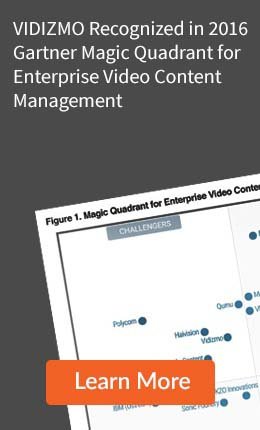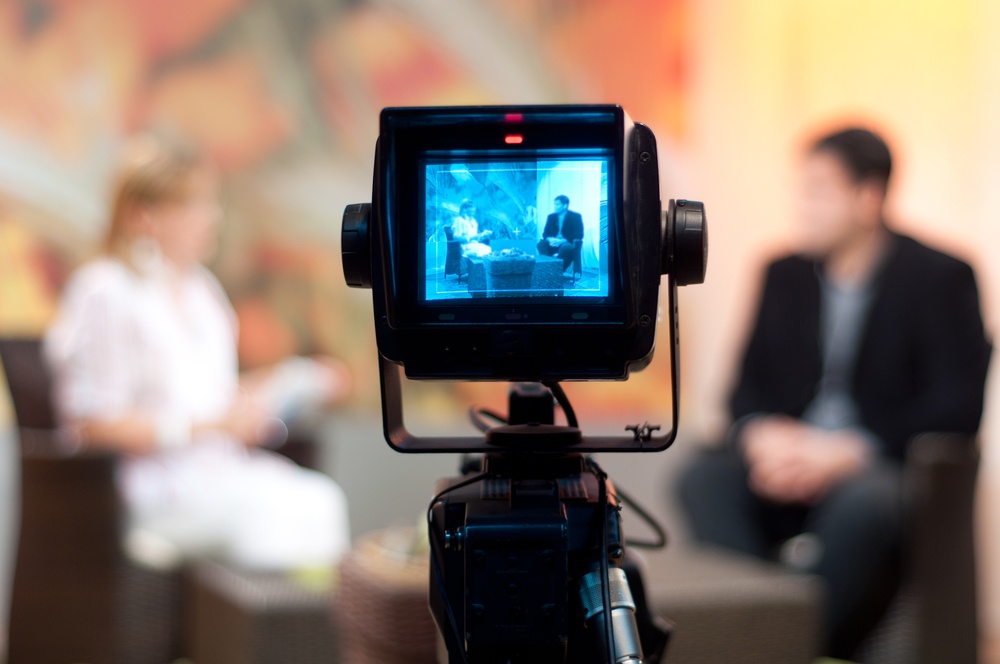Editor: This is a guest post from Mark Hislop, President Video Impressions, a full-service video production company based out of Chicago, IL and a VIDIZMO Partner. Established in 1981, VI has become one of the midwest's largest production and post-production companies, renowned for its broadcast, corporate, and industrial productions.
If you are looking to increase your video quality while recording either a live event or footage for on-demand access, there are several points to consider. 
1. Camera
Most cheap webcams have a fixed focal length and automatically adjust focus and exposure, resulting in a constantly changing image. A proper camera should be capable of adjustable focus, zoom, and aperture. The user needs to be able to set the right zoom range and lock in the focus and iris so that the image doesn’t change while recording. Typical consumer or “prosumer” cameras fit this bill. Examples are the Sony Handycam series, Canon Vixia series, and Panasonic HC-V700 series Prices range from $300 to $700 typically. These are all HD cameras and can be used to feed a signal directly into a computer or encoder for live streaming. Or they can be used to record footage, which is then edited and uploaded for VOD. If they are being used for live streaming, and being fed directly into a computer, then usually a video capture device will be required. Examples are Sabrent USB-AVCPT, BlackMagic Design UltraStudio, or Diamond VC500. Prices range from $30 to $375.
2. Tripod
One of the most causes of poor video quality is the lack of a stable image. The camera view wobbles around because somebody is trying to hand-hold the camera. An inexpensive tripod will solve this problem. The cameras I have recommended above are all lighter than a 35mm DSLR camera, so any lightweight photographic tripod will work. Typical prices are $25 to $150.
3. Lighting
No matter how good the camera is, poor lighting will cause a poor image. Most people try to record in typical office lighting conditions. This means all of the light comes from above, resulting in dark shadows in the talent’s eye sockets. A couple of inexpensive lights positioned slightly above the talent, and at 45 degrees to each side of the talent make a big difference in the final result. Even better results are obtained when using the industry-standard 3-point lighting techniques.
4. Audio
Audio is usually the forgotten step-child of video. Typically people use poor-quality microphones on laptops or the camera-mounted microphone. The problem in these cases is that the microphone is far away from the talent, so it picks up all of the extraneous room noise, and the talent sounds very far away. It is very important to have a close-coupled microphone on the talent in order to get professional audio results.
By close-coupled, I mean that the microphone is either clipped onto the talent (a lavaliere microphone,) or within 12 inches of their mouth (a boom microphone or a table microphone). Decent quality microphones can be obtained from sources like Radio Shack for prices ranging from $30 to $300. These microphones can be connected directly to a computer or encoder for live webcasts, or connected to the cameras listed above for recording media to be used later in VOD presentations.
Posted by VIDIZMO Team
We at VIDIZMO are experts in secure and compliant video streaming and digital evidence management. Our aim is to help educate such that you can better utilize your video data.


